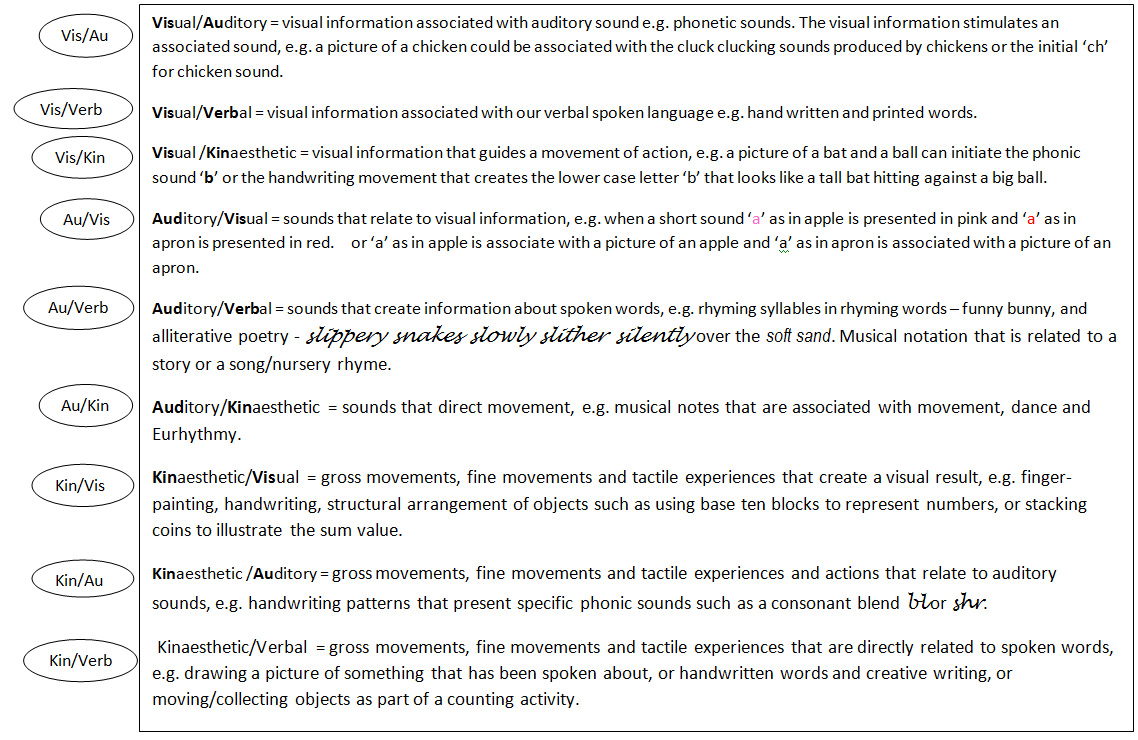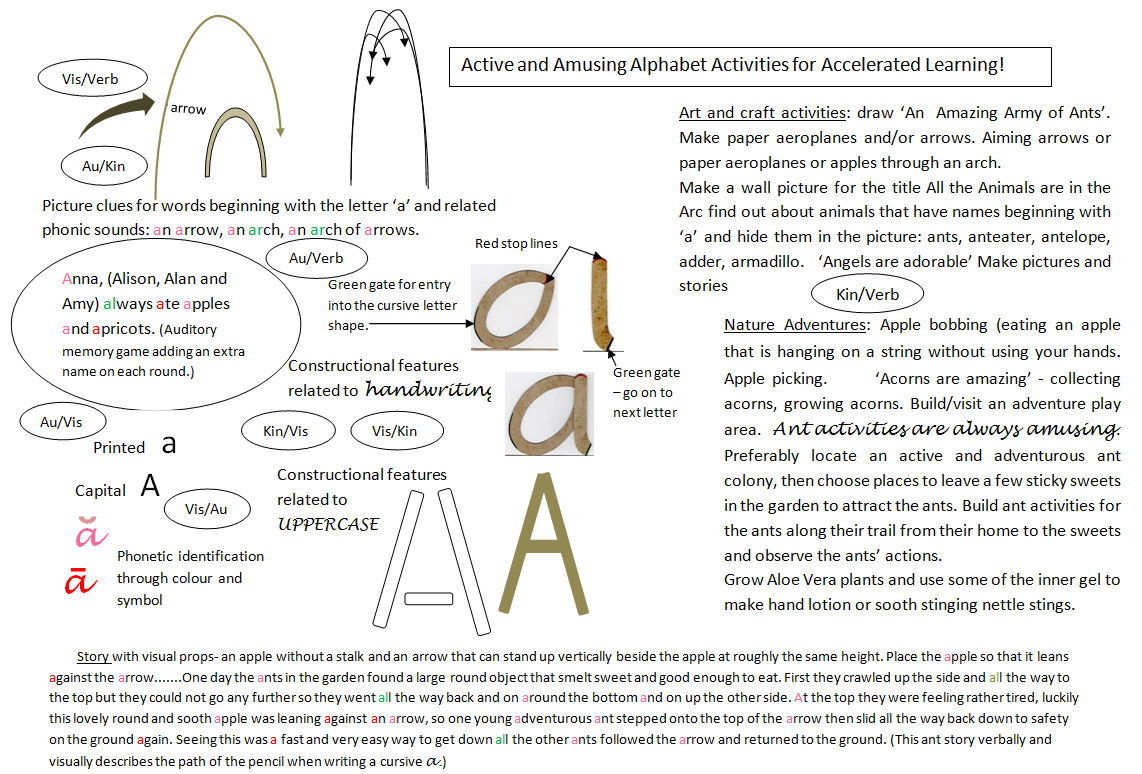We gain sensory information through our association with other beings, situations, structural objects and things present in our surrounding environment. This suggests that if levels of stimulus are beyond our ability to establish some form of conscious organisation, then we fail to perceive from a positive perspective of understanding and related choice. Thus, we cannot thereby engage in the human benefits of directing our own experiences.
Learning happens through association. Even psychic abilities and extra sensory perceptions, which are often seen in young children, are considered a normal part of sensory perception by those that have them. Even these exceptional skills also appear to be stimulated by a direct association with a specific person, place, or thing.
Thinking, Feeling and Willing
Different sensory elements can be united as a meaningful integration of perception through the human faculties of Thinking, Feeling and Willing.
‘The human being is citizen of three worlds. Through his body he belongs to the world which he also perceives through his body; through his soul he constructs for himself his own world; through his spirit a world reveals itself to him which is exulted.’……..
(G. Childs 1991,citing Steiner)
If sensory information remains as separate elements then we only comprehend differences and understanding cannot be established. In order to gain aspects of comprehension we must unite the different sensory elements of our reality. (Steiner 1996:137-140)
‘You can therefore understand how immensely important it is that we educate children and develop each of the senses in balance, since we can then systematically and consciously seek the relationship between the senses and perceptions.’ (Steiner 1996:145)
Genuinely unique multi-sensory activities and ‘open ended’ forms of creative play do not have a predetermined range of sensory experience or specified goals and measures of achievement. Opportunities for child-directed multisensory integration may embrace a spectrum of intelligence that is unacknowledged by media entertainment and manufactured toys. Environmental scaffolding for multi-sensory activity can embrace a wealth of variable sensory experience whereby:-
- Motivation and focus are intrinsically directed by opportunity and personal choice;
- Knowledge and skills are secondary to the abstract qualities of enjoyment, social interaction and pleasures of participation.
- Creative consequences extend as gifts beyond normal boundaries and over-flow into new areas of creative potential.
- Each individual’s unique human design is nurtured, like a tender seedling, with multi-sensory perceptual choices.
This offers an indefinable potential for creative occupation and an expansive relationship with sensory awareness and integration. Thus
The author has found that possibly all anti-social behaviour can be associated with some form of sensory over-whelm. Over-stimulation and sensory over-whelm may disrupt the person’s ability to successfully perform the following internal skills:-
- Prioritize a desired or required area of perception.
- Turn down the perception of unwanted or distracting stimulus.
- Co-ordinate with appropriate timing a chosen response to a specific external situation.
- Interrupt a fear based reaction
- Renegotiate a primitive response based upon a past traumatic experience.
Pain is a sensory experience that overwhelms our ability to function normally so that the healing process can be successfully attained. Fear is present when we encounter a circumstance that we believe is personally unsafe. Negative and disruptive behaviour e.g. shouting or hitting, may be designed to override personal dysfunction and the vulnerability associated with over-stimulation of the sensory system.
When relating to challenging behaviour the author works form the principle of ‘change the environment not the behaviour!’ This approach has been successful throughout her career as teacher, specialist foster parent and family therapist. In challenging situations sensitive children are often expected to manage calmly even when the over whelming sensory circumstances have disrupted the adults’ ability to function with appropriate wisdom and care.
Any quest to ‘change the environment not the behaviour!’ may need to address issues of sensory exposure; i.e. external factors related to where, when, how, what and with whom. A supporting adult may need to consider a wide range of creative alternatives in terms of supportive scaffolding, social interaction, alternative materials, location, social expectations and boundaries.
Those that have had traumatic experiences in the past may experience overwhelm when a small stimulus triggers an association with fear related behaviour. Fortunately the conscious mind can over-ride these fears but for some this process of clearing can be difficult to organise. However, ancient and modern therapies of today work on the principle of presenting a positive energy/sensory experience to clear a negative survival programme. Successful therapies therefore suggest that consciously organised positive responses can alter fear based behaviour and the original source of disruption can thereby be resolved.
However, a child with a limited level of conscious development and divergent thinking skills may fail to be supported by opportunities for consciously organised positive self-healing. Never the less, if someone can address fear based behaviour with a positive environment and loving attitude this can help clear the original source of disruption.
The pioneering work of the late Rachel Pinney was based on a positive non-judgemental state of mind. She pioneered the concept of Play Therapy and presented the benefit of Special Time and Creative Listening. Rachel Pinney illustrated how non-judgemental carers can provide ‘Change the environment not the behaviour!’ scaffolding that helps present positive opportunities for children to clear negative and anti-social behaviour.
Neil Kaulfman describes in his books ‘To Love is to be Happy With’ and ‘Son Rise’ a similar approach of support that avoids over stimulating environments and encourages self-directed responses to one to one social interaction.
More recently the books by ‘Horse Boy’ and ‘again illustrate a healing process that was founded upon natural environmental experiences, one to one social interaction and a generally gentle low stimulus life-style of daily living.
Marshal Rosenberg’s work on Non-Violent Communication a language of life presents strategies that can help adults and older children to avoid defensive reactions when challenged by another person’s behaviour.
Integrating Multisensory Information
It would appear that everyone has their own individual capacity to receive and integrate multisensory information.
If one sensory perception is impaired we have the capacity to compensate this deficit with the enhancement of another sense. The blind child may be noted for the development of a superior hearing ability and a deaf child may develop superior visual perceptual skills. What is not so obvious is how a child who has a hidden sensory impairment compensates for the sensory deficit. Victoria Biggs writes about her own story in her book ‘Caged in Chaos’. The author has noted that children who present learning difficulties related to an impaired vestibular system and/or dyspraxia, may illustrate a heightened emphasis on verbal interaction. In this way they appear to gain an awareness of where they are, and establish an on going relationship with those around them: who, why, where, and what. This skill of engaging others in verbal social interaction can bring a greater awareness of what those around them are doing or going to be doing and why. However, excessive verbal interaction may create a certain degree of occupational control over another person’s activities and distract the learner from self-directed activity related to sharing and interactive play.



Multisensory information and our intellectual development
From a very early age we are receiving, processing and integrating a wealth of multisensory information. The way we relate to this information determines our intellectual development and associated performance. Learning happens when we apply our conscious will to the reception and integration of the sensory information we gain through our association with other beings, situations, structural objects and things present in our surrounding environment. This suggests that if we receive levels of stimulus that are beyond our ability to consciously organise from a positive perspective of understanding, we cannot engage in the human benefit of directing our own destiny through our personal relationship with choice.
When environments are positive and calming to the senses do they indeed help those living there to develop their learning through a more conscious awareness and organisation of their sensory experiences. Many of those who have followed a strict spiritual rather than material lifestyle have attained outstanding academic and psychic achievements.
Many Spiritual masters and Saintly persons have had a simple childhood; away from over stimulating environments dominated by media entertainment, adverse conflict and controlling authoritative governmental influences. Spiritual communities are careful about what association they make with negative energies. They generally focus on a simple natural lifestyle, quietness, inner meditation and a peaceful disposition within the ashrams, monasteries, temples etc.
Is positivity directed by how well we can relate (consciously) to our sensory experiences? They say it is attitude that directs our levels of positivity and success, but maybe attitude is based on how well we can integrate and understand the accompanying sensory experience.
Is the greatest expression of love dependent upon how we associate with our external experiences?
Does an actively multi-sensory lifestyle enhance:-
- intellectual practices associated with exploration, experimentation and investigation?
- creative thinking?
- co-operative sharing?
- descriptive vocabulary?
Furthermore how might a media based lifestyle influence the way we explore the special qualities presented by multisensory experiences; for example: ‘This is a tree’ verses ‘This tree has special qualities – (it is very tall and thin, the leaves are… the bark is … it smells… and feels…..this tree experience is creating inner feelings of…..). Do we see each tree as a unique and wonderful sensory experience or as an example of the collective concept of treeness? Can or has the modern explosion of media entertainment dulled our multisensory awareness. Has our world of media based communication and entertainment polarised or channelled our individual interactions away from an interactive multisensory exploration of our environments. What happens when we apply our conscious will to the reception and integration of the sensory information we gain through association with other persons, situations, structural objects and natural surroundings. When we receive stimulus levels that are beyond our ability to consciously organise from a positive perspective of understanding, can we successfully regulate our behaviour and perception of choice?
| ‘You can therefore understand how immensely important it is that we educate children and develop each of the senses in balance, since we can then systematically and consciously seek the relationship between the senses and perceptions.’ (Steiner 1996:145) |
Steiner schools today present that watching television does not meet the sensorial needs of the young child and, furthermore, prevents the young child from receiving what he needs in order to have his physiological and sensory needs met appropriately. Steiner emphasised the need to learn through movement and multi-sensory experience; watching computer screens and TVs does not involve any body movement and presents an unnatural dominance of visual stimulus, much of which may not have any meaning within the child’s own personal reality. Media presentation and toy manufacture exclude an inter-personal presentation/sharing, and an invitation to engage in interactive imaginative and creative play?
| Sloan describes his concerns as follows …..‘- through television, movies, literalistic picture books, detailed toys that leave nothing to the child’s own imaginative powers – children are made increasingly vulnerable to having their minds and feelings filled with ready-made, supplied images – other people’s images…..’ (Steiner, 1988:Forward) |
